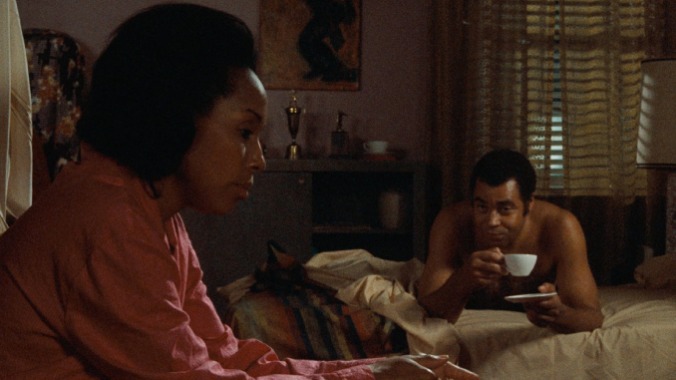The Best James Earl Jones Movies

Darth Vader had an EGOT. It’s hard to fathom a single man providing the unmistakable voice for one of pop culture’s best villains (and countless action figures) and being exceptional across so many performance styles that he acquired an Oscar, Emmy, Grammy and Tony. But James Earl Jones could do it all. Outside his booming bass, Jones’ talents brought Shakespeare and August Wilson to life, gave kings of all species a little extra authority and waxed poetic about baseball. From his earliest on-screen days in Dr. Strangelove to his wackier genre turns in movies like Conan the Barbarian, Jones offered the same heat he brought to his most critically acclaimed roles (in the likes of Claudine and Matewan). He bossed around multiple Jacks Ryan and was the first guest star on Sesame Street. Seriously, he was everywhere. Jones’ myriad abilities placed him at the very top of American actors, so let’s celebrate his career by looking back at his best movies.
Here are the 10 best James Earl Jones movies:
1. Claudine
Year: 1974
Director: John Berry
Stars: James Earl Jones, Diahann Carroll, Lawrence Hilton-Jacobs
Rating: PG
While the Blaxploitation era mostly consisted of badass brothas and sistas whooping the asses of figures—gangsters, drug dealers, the MAN!—who were trying to keep the Black community down, Claudine was a complete 180 from all those righteous-but-over-the-top spectacles. Diahann Carroll stars as the title character, a mother of six kids—the result of two marriages and two “almost marriages”—who supports these ragamuffins by housekeeping for a white couple and getting welfare. Despite being middle-aged and consistently running ragged, Carroll’s Claudine still catches the eye of Rupert P. Marshall (James Earl Jones), a smooth-talking garbageman who takes her to his place for a relaxing date—which mostly consists of a bubble bath, a bucket of fried chicken and a roll in the hay. The first half of the movie has Claudine trying to maintain a no-strings-attached “project” with Marshall (“Roop” to his peoples), while also raising her kids and keeping “Mr. Welfare” from finding out she’s been cheating on him. (Whenever the lily-white welfare lady comes, she and the kids have to hide anything that looks remotely new.) Eventually, Claudine catches feelings for the trash man, especially when he starts becoming a father figure to the little ones. For a movie written and directed by white folk (as usually was the way during the Blaxploitation years), Claudine is surprisingly spot-on in its portrayal of living in lower-income America. Blacklisted director John Berry stepped in when African-American stage/screen vet Ossie Davis bowed out of directing. Berry took married screenwriters Lester and Tina Pine’s script and crafted a movie that speaks more about the Black experience than any Blaxploitation movie did at the time. Carroll has wonderful chemistry with Jones, who gives his most suave, romantic performance. Even when he starts getting pressure from the tax man to pay more for his out-of-state kids, the man who voiced Darth Vader, Mufasa and other powerful mofos still does outstanding work playing that rarest of on-screen Black archetypes: A Black man who actually wants to be there for his girl and her kids. Claudine grossed $6 million and became one of those beloved hood classics that inspired other Black artists to make different, more positive, more honest stories about Black people.–Craig D. Lindsey
2. Coming to America
Year: 1988
Director: John Landis
Stars: Eddie Murphy, Arsenio Hall, James Earl Jones, John Amos, Madge Sinclair, Shari Headley.
Rating: R
If this movie consisted of the barbershop scenes inside of My-T-Sharp and nothing else, it would still be one of the greatest comedies of all time. Eddie Murphy and Arsenio Hall teamed up with director John Landis (Blues Brothers) and created a classic. As Prince Akeem from the fictional African country of Zamunda, Murphy travels to the great United States of America to evade his arranged marriage and find true love (in Queens, obviously). Akeem encounters all of the wonders of Black America, but the satirical twist is genius—the Black preacher (via Hall as the incomparable Reverend Brown), the club scene, the barbershop, hip-hop culture, and Soul Glo—it’s all here. Cameos from actors like Cuba Gooding Jr., Samuel L. Jackson, Louie Anderson, and Murphy’s Trading Places co-stars Don Ameche and Ralph Bellamy take the Coming to America experience to a whole new level. An excellent comedy and a great tribute to New York City, this story of a prince just looking to be loved is a must-see for everyone—including those of us who’ve already seen it. —Shannon Houston
3. Dr. Strangelove Or: How I Learned to Stop Worrying and Love the Bomb
Year: 1964
Director: Stanley Kubrick
Stars: Peter Sellers, George C. Scott, Sterling Hayden, Slim Pickens
Rating: PG
While attempting to adapt Peter George’s novel Red Alert for the big screen, director Stanley Kubrick found that he kept needing to cut out certain real-life details about the emergency nuclear bomb procedures because they were simply too absurd to work in a serious drama. Deciding to rewrite the project as a dark comedy, he recruited renowned satirist Terry Southern to help pen the script. From there, it’s all history. To this day, Peter Sellers’ three very different (and very funny) performances remain a feat by which few actors have matched. Moreover, the image of Slim Pickens riding the bomb to its destination as well as the final montage of destruction set to the wistful “We’ll Meet Again” are the stuff of movie legend. Worldwide Armageddon has never been so hilarious.—Mark Rozeman
-

-

-

-

-

-

-

-

-

-

-

-

-

-

-

-

-

-

-

-

-

-

-

-

-

-

-

-

-

-

-

-

-

-

-

-

-

-

-

-








































